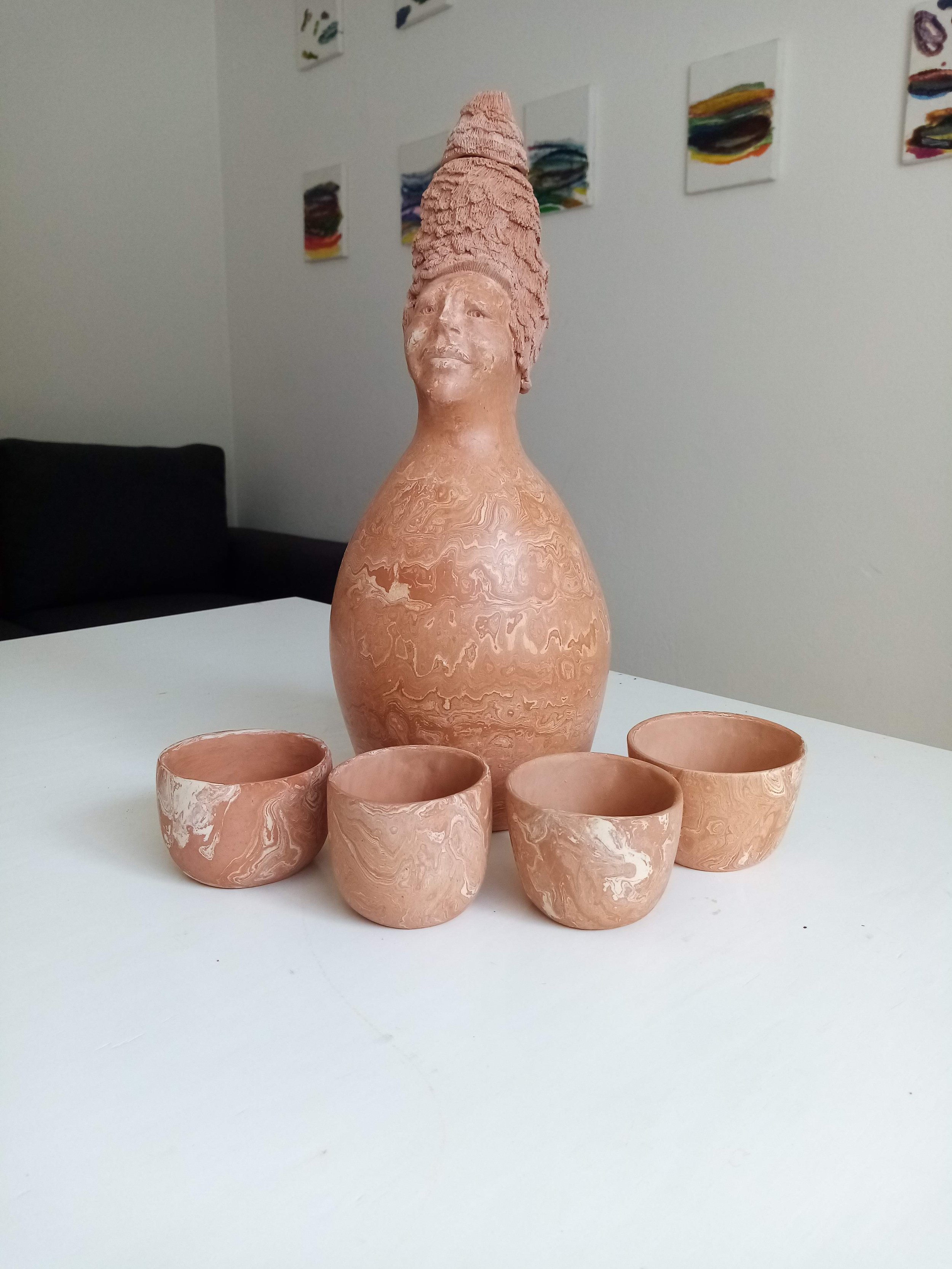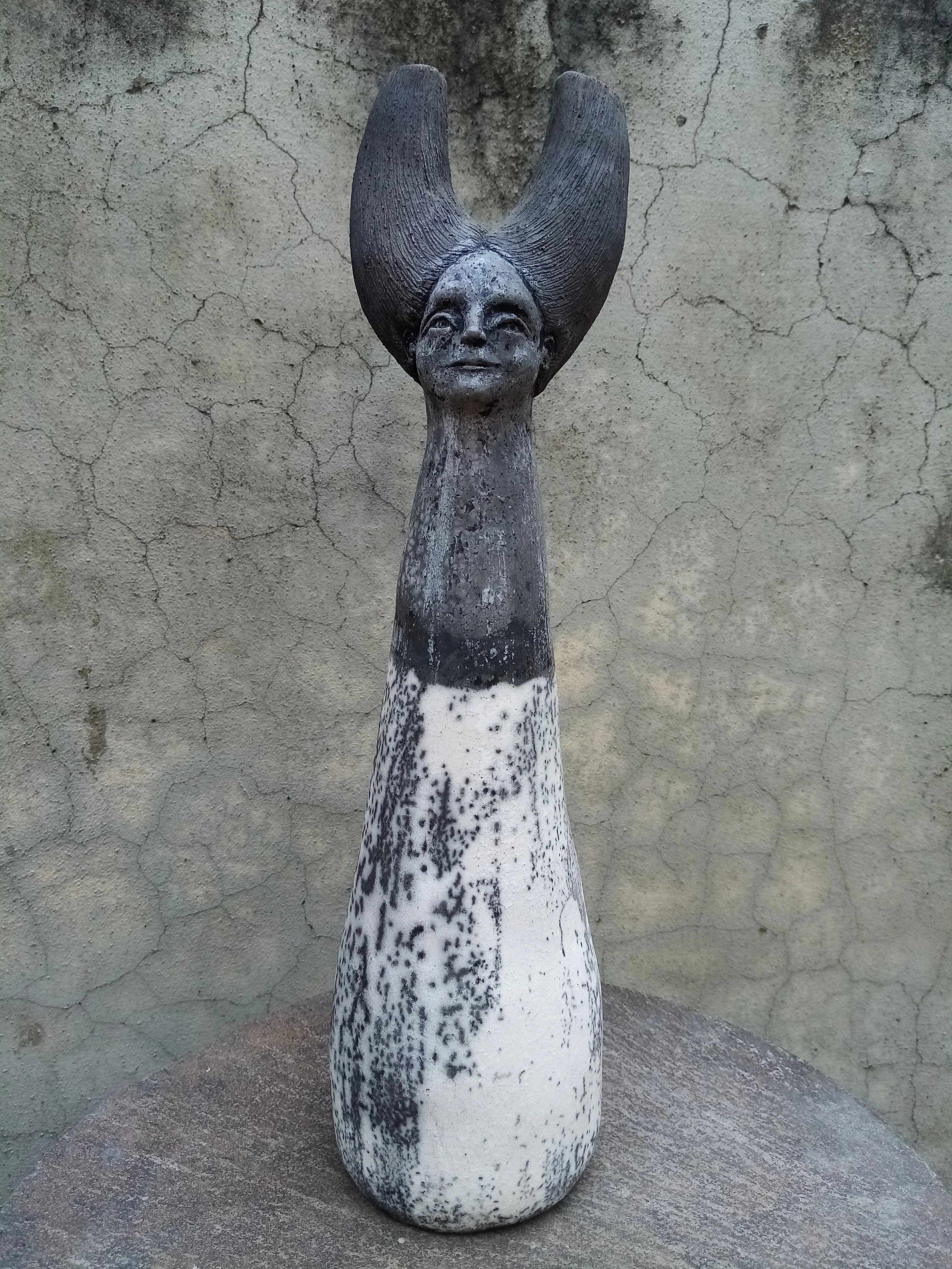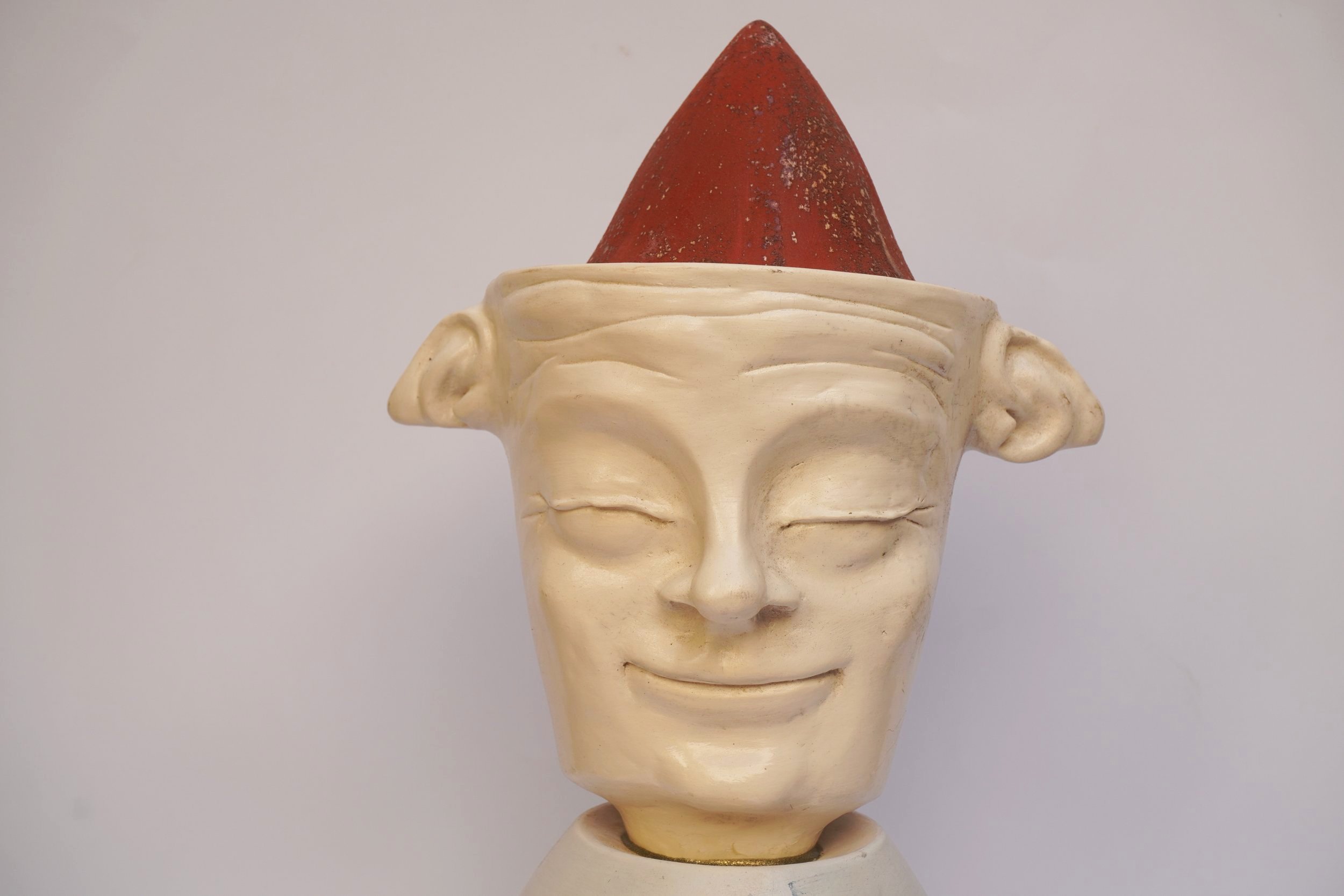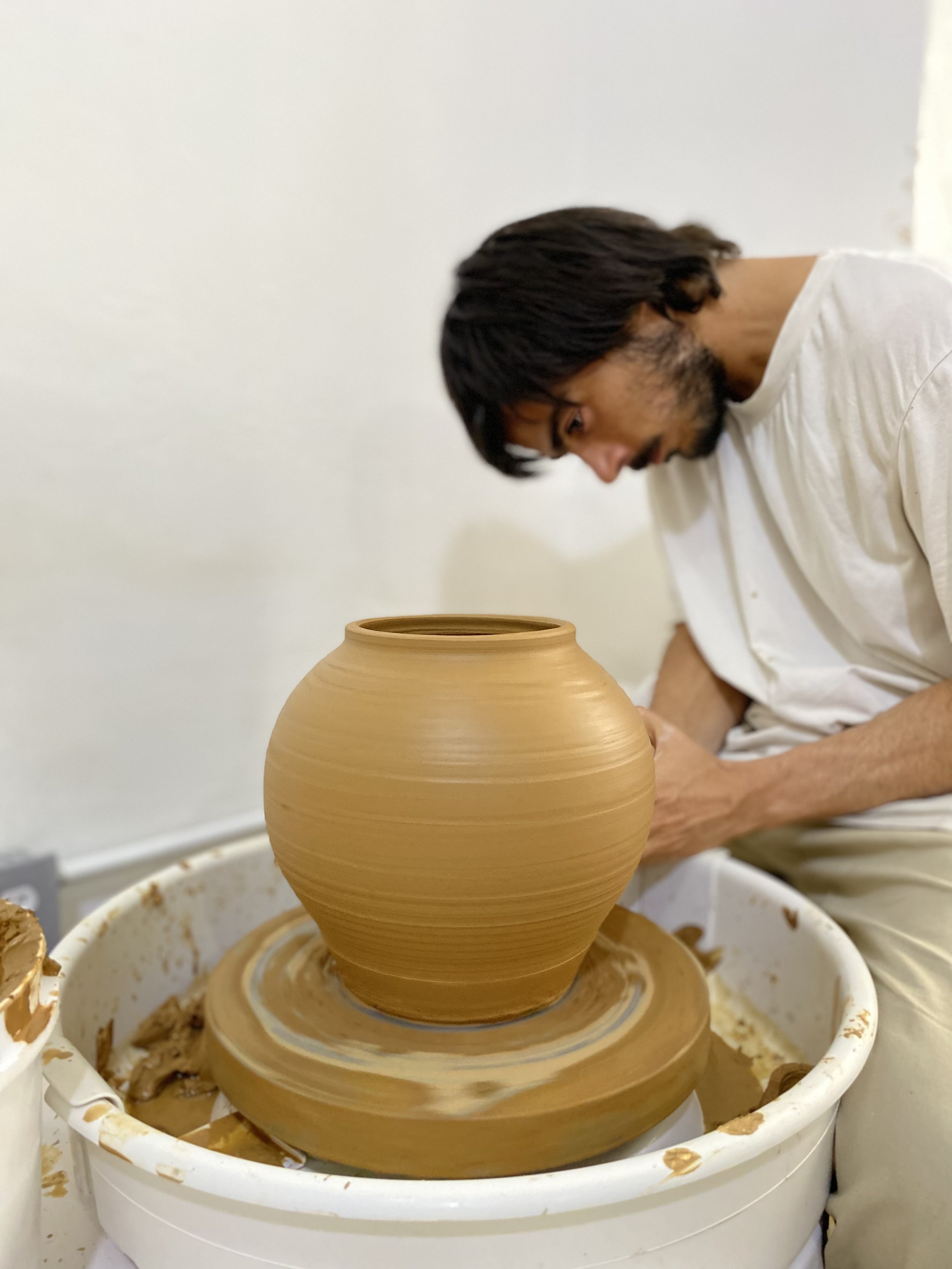Interview
Santiago Varela
Santiago was born in Guadalajara, Jalisco, Mexico. His first attempt at sculpture was in an art class in college. He then studied industrial design at the Universidad de Guadalajara. While at an academic exchange program in Misiones, Argentina, Santiago was introduced to ceramics and created his first clay sculptures.
In Argentina, Santiago was a member of the Ceramic Collective of Misiones. In 2016, he participated in the Barro Calchaqui event of the National Ceramics Encounter, and was among the winners of the Honorable Mention in Expression of the Figure. When Santiago returned to Mexico, he started a little studio in his backyard. This is where his fantastic world of ceramics really began.
Currently, Santiago works in a ceramics studio, Casa Ceniza, where he practices different techniques on the wheel, and also does hand building.
What is your background and how did you start your journey in the art world?
“In 2017, I went to work as a clay sculpture teacher in a rehabilitation center. Here, I had the opportunity to explore different themes and forms. I continued my research at a Jesuit school, where I taught next, by exploring the different materials.
In 2019, I was invited by Squalo— a Mexican beach/surfwear brand— to participate in their commemorative campaign for Oceans Day. The event was also to raise awareness on the use of plastic. Without using any additives, I prepared a one-piece installation made of wood waste and plastic bottles. After that, I exhibited my work at Galeria Vertice, where I sold most of my pieces.
I got to learn more about the artist world in 2021 when I attended an art residency in Casa Omega, Mexico.”
“I think it is important to be able to have a dialogue with an artwork without having to read the artist’s description. I believe that art is for everyone, and a piece can generate a smile, discomfort, sadness, anger or the simple joy of enjoying a moment of coincidence.”
What inspires you most?
“My biggest inspiration is everyday life and the life of my ancestors. In ancient Mexican civilization, they made sculptures from ceramic, stone, wood and other materials, trying to represent the lives of people. There are also some sculptures that depicted a celebration or some ritual.
Sometimes, seeing a smile is enough to start creating.”
What themes do you pursue? Is there an underlying message in your work?
“I like to observe people’s expressions as they carry on with their daily activities, then try to capture that in my work. Experimentation is an important part of my process, since it generates personality and authenticity in the work. I don’t really look for a specific topic. I just try to have fun through the process, and I try to convey that fun and enjoyment of working with my hands on the clay. The beauty of being able to work with my hands is that there is always one trace that reminds us that we are human.”
How would you describe your work?
“My work is a figurative expression through ceramic sculpture. I try to represent my feelings with clay. My works are generally vessels or vases with a face, and the face is the emotional part of the piece. Experimentation in burning is the technical part that gives the piece an essence and an authentic personality. My works are generally pieces with a happy and sincere expression.”
Which artists influence you most?
“I like the works of Leonora Carrington, Remedios Varo, Rodo Padilla, Javier Marín, Alejandro Colunga and Osmany, Betancourt, Franco and Lolo.
I really love ‘The Epic of American Civilization’ by Jose Clemente Orozco. It reminds me that academia is not the only way to study or generate knowledge. Not everything is found in books and in formal education. Creativity and ingenuity is part of everyone, and we all obtain it in different ways. We always have an inherent desire to explore.”
What is your creative process like?
"My creative process is not always the same. Sometimes I have the general shape of the sculpture in mind, and I make adjustments as I build. For the faces, I rely a lot on the shape of the vessel or vase. The facial expression usually depends on my state of mind at that moment. When I feel trapped or stuck, I try to generate a form that accentuates that sensation.
For the finish, I try to experiment with the different possibilities that ceramics allows me. I never know what the final result will be, so each piece surprises me. I never know if it will turn out well or badly; if I used the right materials or if the tones will be correct. This gives a sense of emotion to my work and an added value to the material. Finally, fire does its part to achieve the most beautiful results.”
What is an artist’s role in society and how do you see that evolving?
“The role of an artist is to show different alternatives of how we live in reality. For me, my role is to show my reality through my characters, to connect with people and share common feelings.”
Have you had any noteworthy exhibitions you'd like to share?
“At the beginning of the pandemic in July 2020, I was selected to be part of the first virtual international symposium of carvers and sculptors in Colón, Entre Rios, Argentina. You can view it here.
In October, I participated in two important awards in my state: the Jalisco award for handicrafts 2021 and the national ceramic award.”
Instagram: @varelitafv












